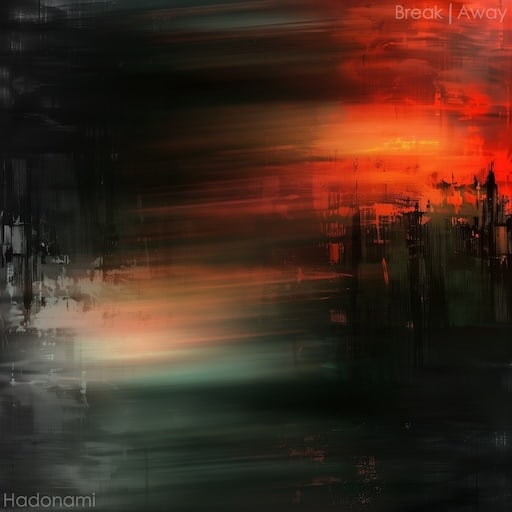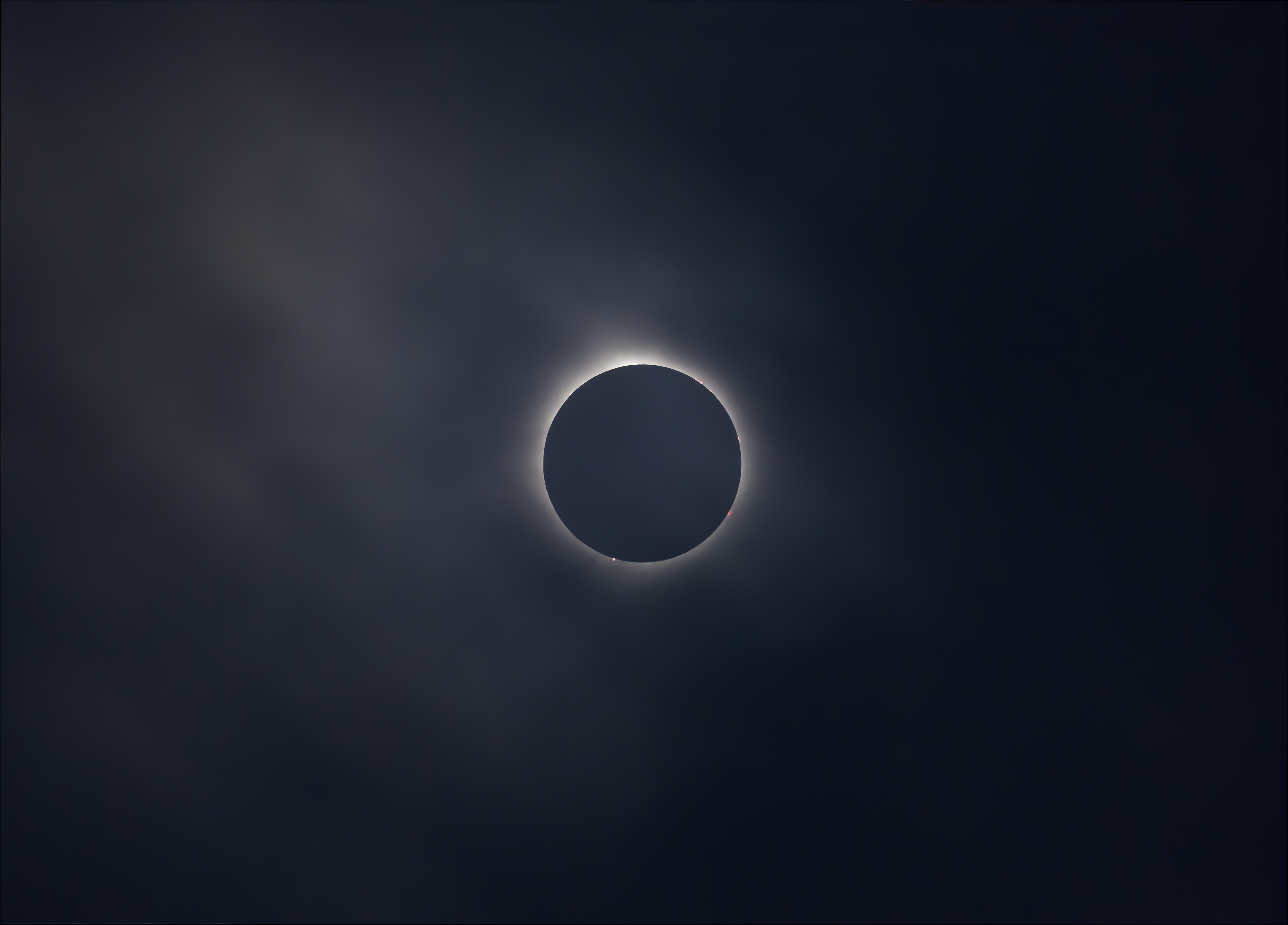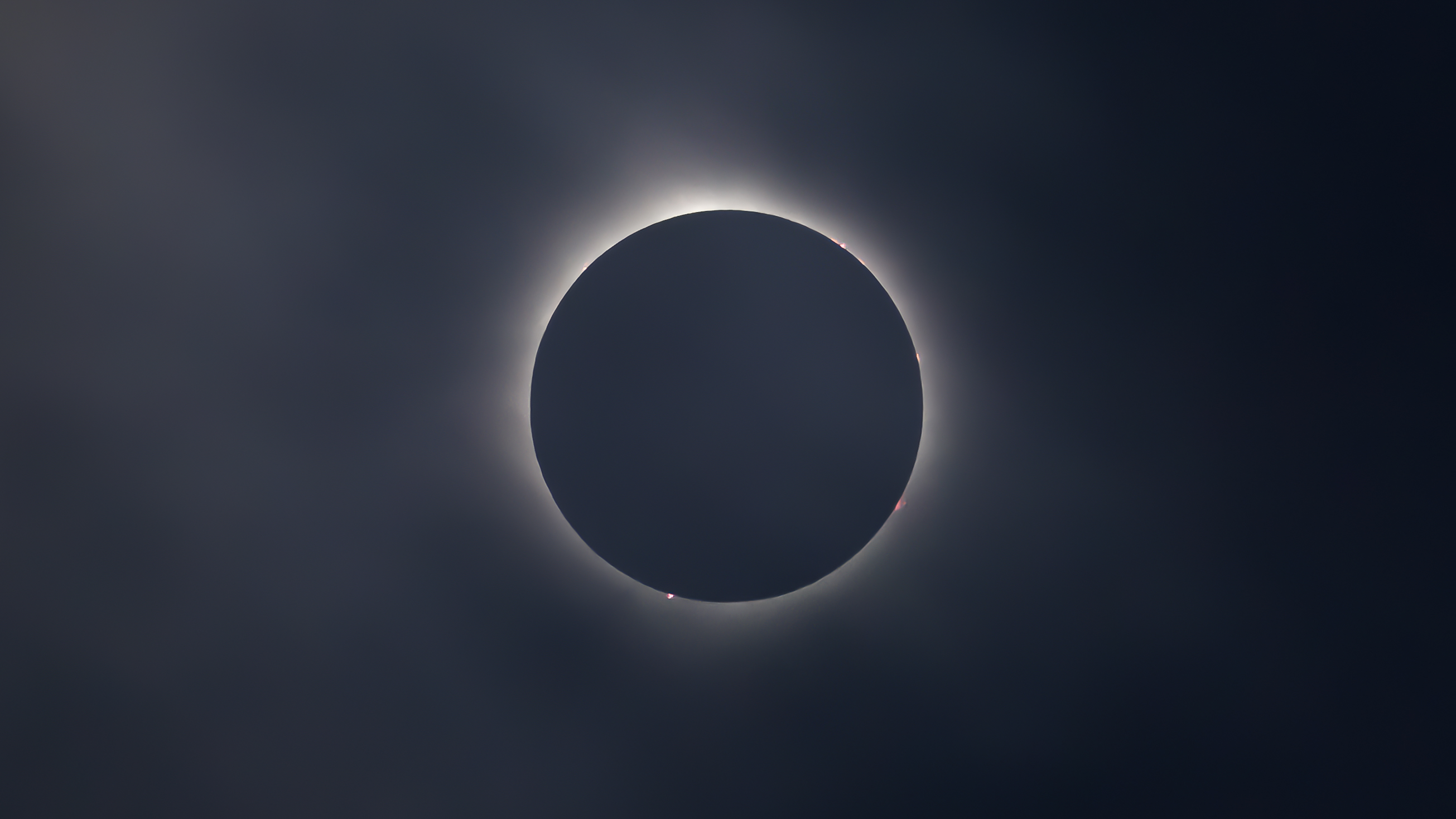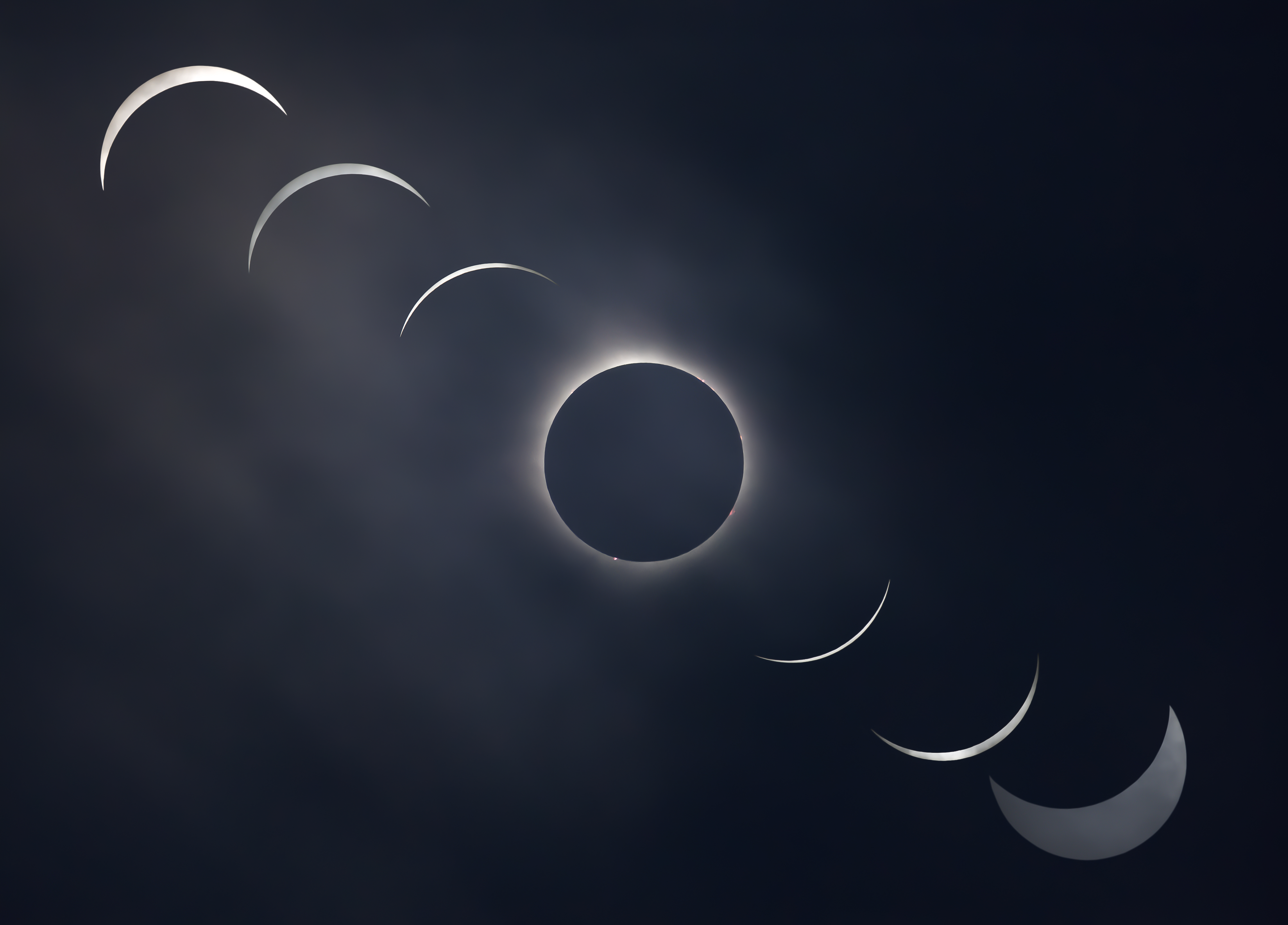
April 8th 2024 Total Solar Eclipse
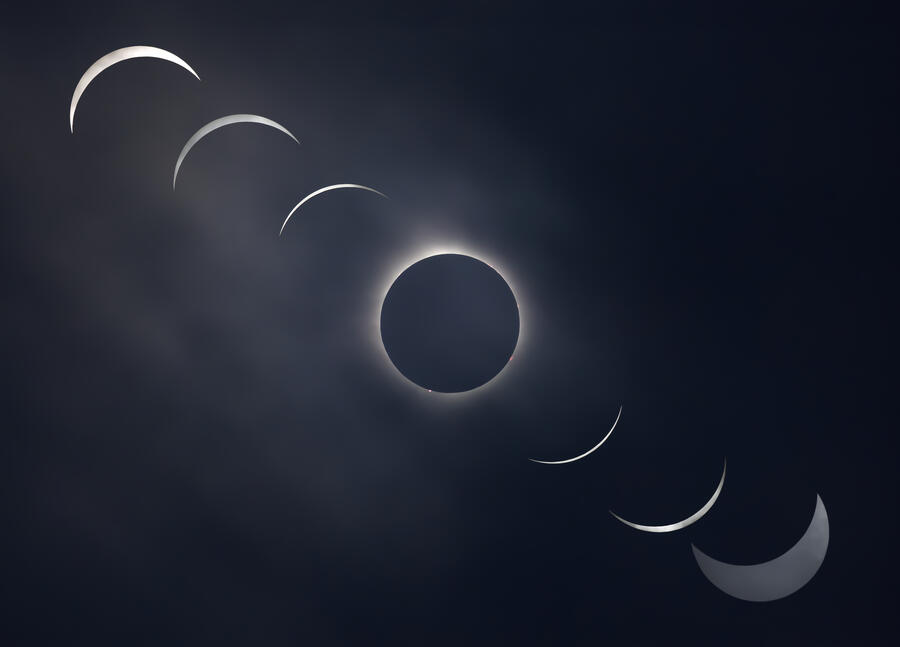 My family and I got super lucky for the total solar eclipse one month ago today: April 8, 2024. We were in western New York, and stayed put as the forecast steadily grew cloudier and cloudier.
My family and I got super lucky for the total solar eclipse one month ago today: April 8, 2024. We were in western New York, and stayed put as the forecast steadily grew cloudier and cloudier.
We couldn't see anything for most of the first hour of the eclipse. While the Moon slowly made its way across the Sun... the clouds were too thick. Finally, as we neared totality, the clouds thinned! The partially eclipsed Sun was revealed! At times the Sun was visible through the clouds but very dim. I had no solar filter and risked my camera by taking some shots. For brief periods it got quite bright and we could finally see the eclipse through our eclipse glasses. Luckiest of all, we had roughly a minute or so of a clear view during totality!
I couldn't resist taking photos. That brief minute was a mad scramble, and I don't remember how much of totality I actually saw with my naked eye. Perhaps I got a glimpse. I am fortunate enough to have seen the entire totality phase of the 2017 eclipse in Oregon (where I didn't spend more than a few seconds looking through the camera) so I've already had my share of naked-eye totality viewing. In other words, I don't feel too bummed out about choosing to point my camera at the Sun rather than just look at it.
I managed to only get around 30 somewhat sharp frames of totality: about half at 472mm at ISO 32,000, and half at 526mm at ISO 16,000. I had to use a surprisingly high ISO — totality was pretty dark! More of the ISO 32,000 frames were sharp, so I used some custom-written python to align and stack those frames to reduce the noise. The stacked result was much less noisy but still wasn't that great, so I used Topaz Photo AI to sharpen and denoise the image, then Lightroom Classic for even more sharpening and denoising.
I like how some of the clouds are still visible in the surrounding darkness. Some of the fine details weren't enhanced as much as I hoped through all the stacking, denoising, and sharpening. Perhaps I'll try to get a better result someday when I re-process the data. (Click to see full-size):
The composite image below includes my best captures before and after totality. Due to the clouds I wasn't able to get evenly-timed shots, but on the other hand if there weren't thick clouds I wouldn't have been able to take any partial eclipse shots at all! Some of the crescent suns are brighter than others, again due to the varying cloud cover.
I'm happy with the images I got, but they did come at a cost. If I ever see another total solar eclipse I'll be sure to not be looking through a camera.


